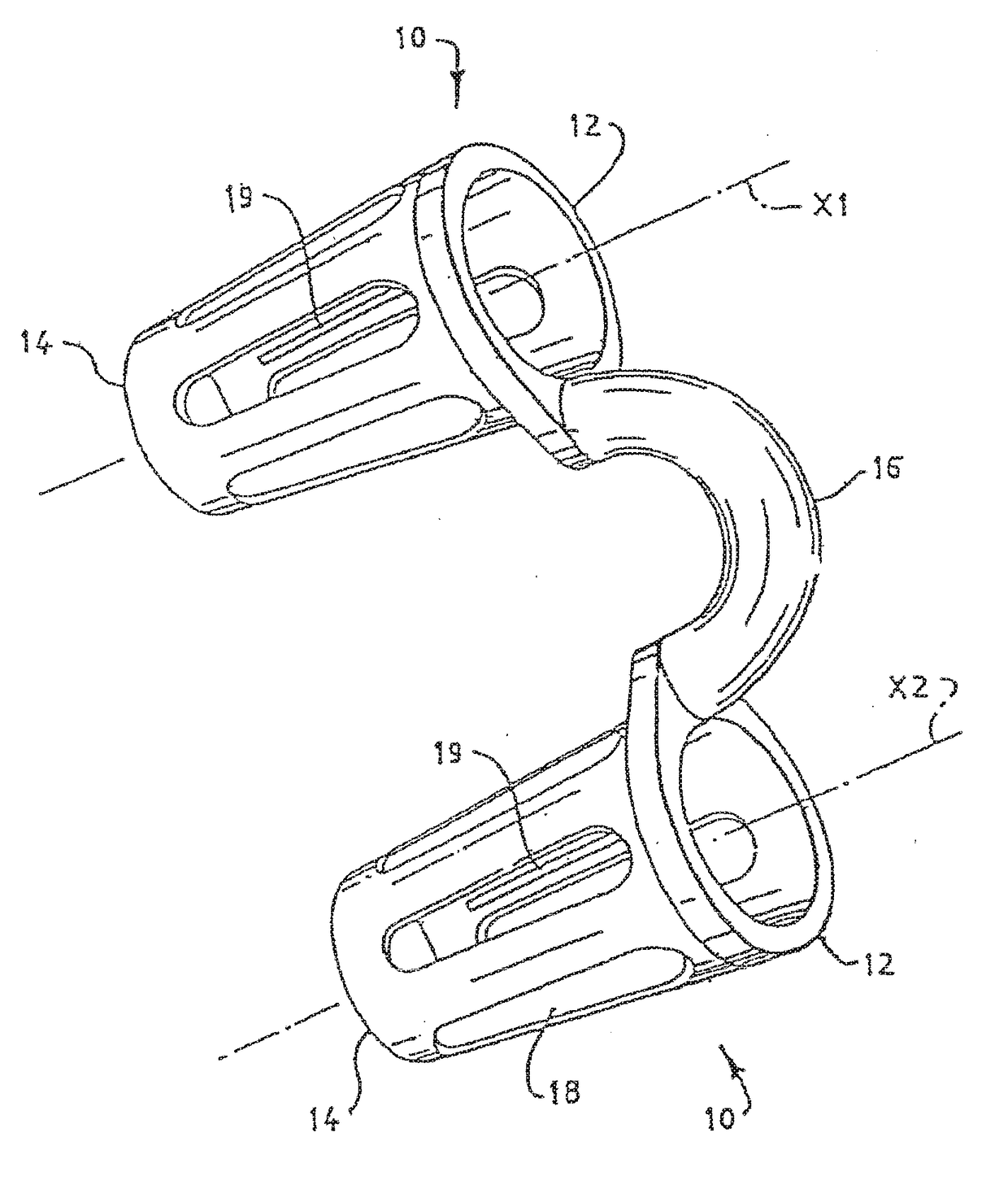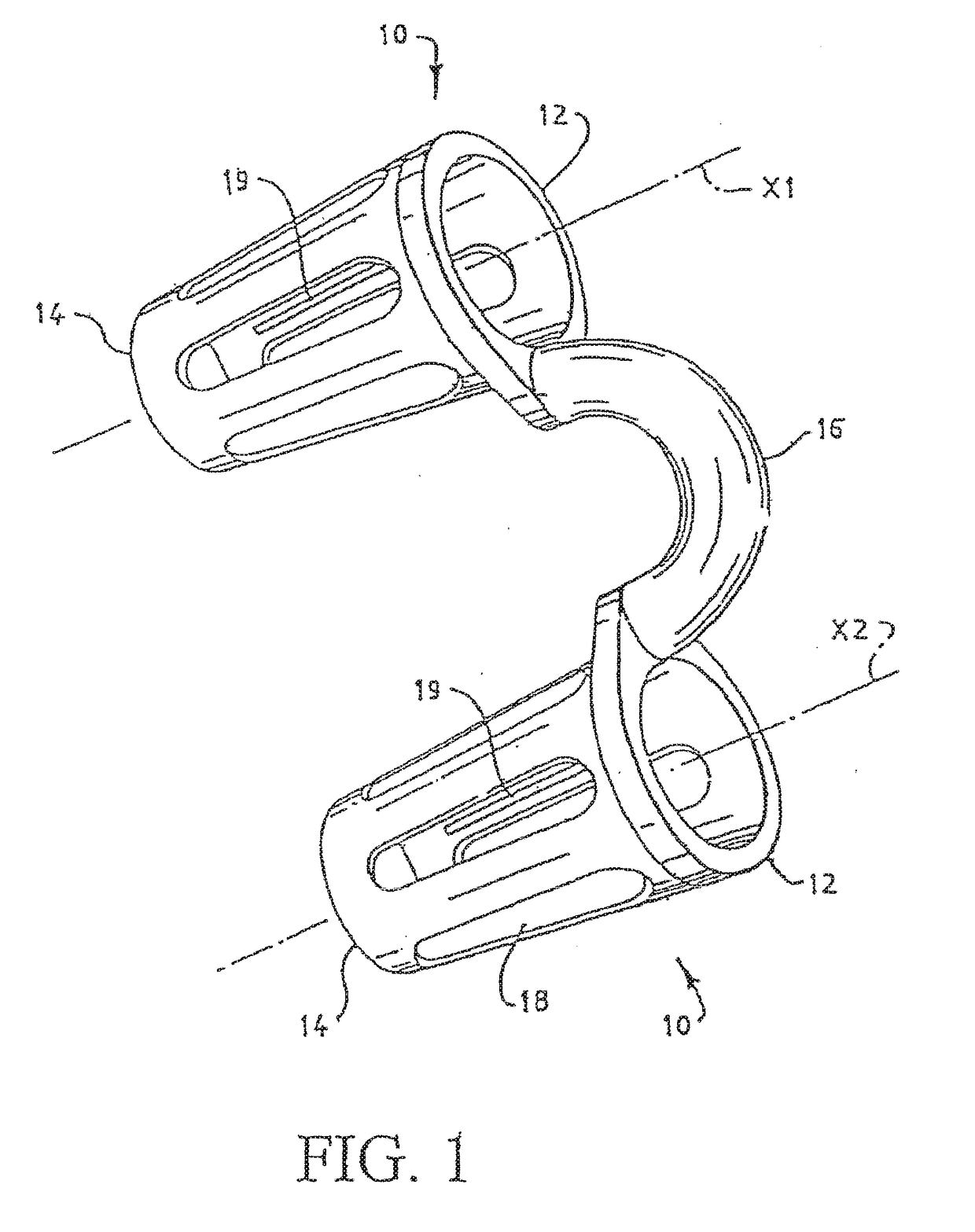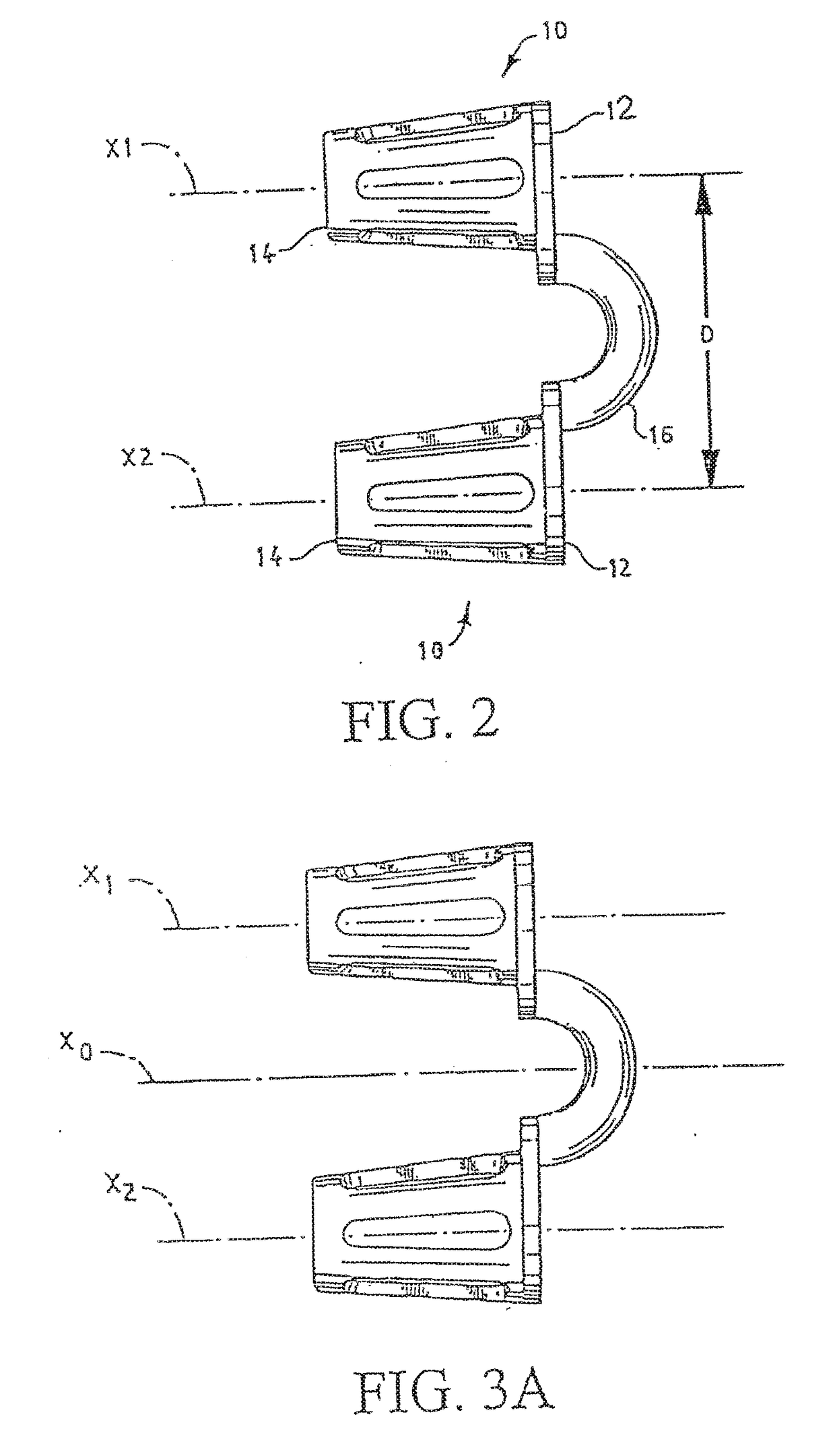Nasal insert having one or more sensors
- Summary
- Abstract
- Description
- Claims
- Application Information
AI Technical Summary
Benefits of technology
Problems solved by technology
Method used
Image
Examples
Embodiment Construction
[0059]The nasal breathing assist devices according to the various aspects of the invention are shown in FIGS. 1 through 10. These devices overcome the deficiencies in the currently available devices. The illustrated devices are small, inconspicuous in use, and require no special attachments or fittings, although they may be combined with other devices, such as cannulas. The devices are worn inside the nose, and can keep the nasal passages open from the inside, rather than by external means. Alternatively, they can simply be used as a mechanism for locating a sensor inside a patient's nasal passage, or they can do both. This allows the devices to maintain airways in noses where nasal obstructions, inflammatory or structural anatomical deviations diminish the effectiveness of externally applied strips. The devices can be used alone, or in conjunction with decongestant and antihistamines powders, tablets or liquid medications, other snore-reducing aids, such as pillows, or medicated na...
PUM
 Login to View More
Login to View More Abstract
Description
Claims
Application Information
 Login to View More
Login to View More - R&D
- Intellectual Property
- Life Sciences
- Materials
- Tech Scout
- Unparalleled Data Quality
- Higher Quality Content
- 60% Fewer Hallucinations
Browse by: Latest US Patents, China's latest patents, Technical Efficacy Thesaurus, Application Domain, Technology Topic, Popular Technical Reports.
© 2025 PatSnap. All rights reserved.Legal|Privacy policy|Modern Slavery Act Transparency Statement|Sitemap|About US| Contact US: help@patsnap.com



